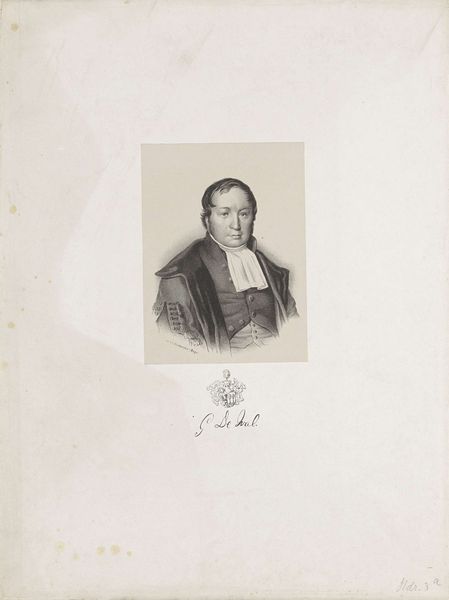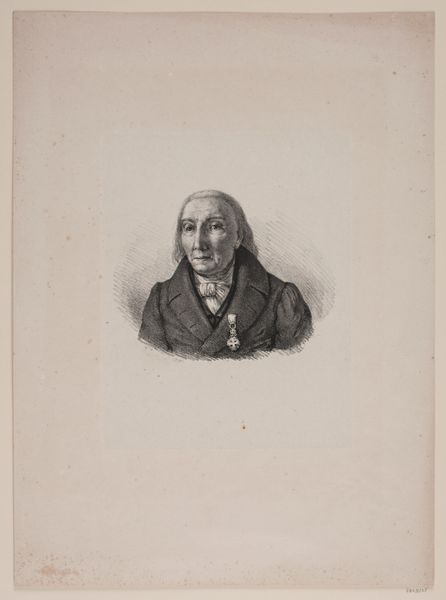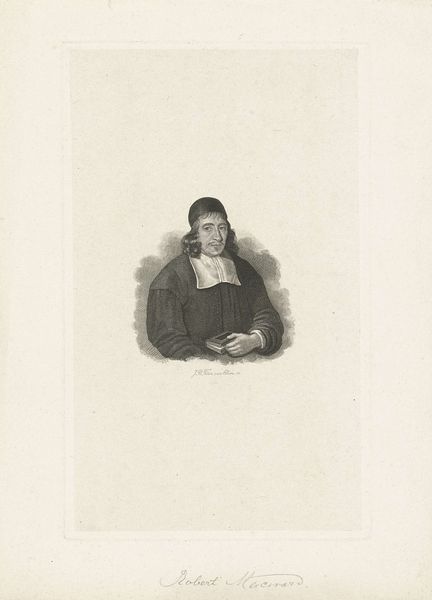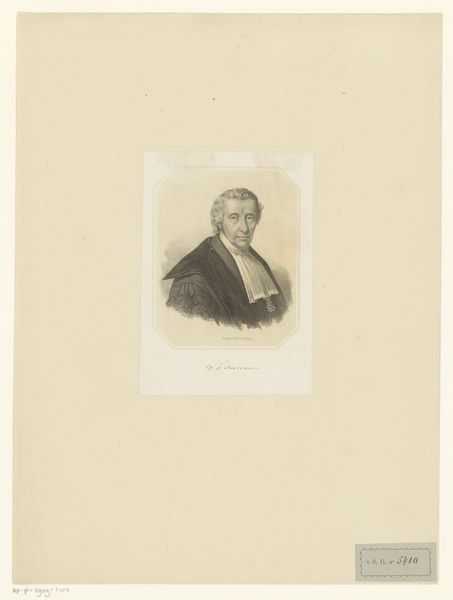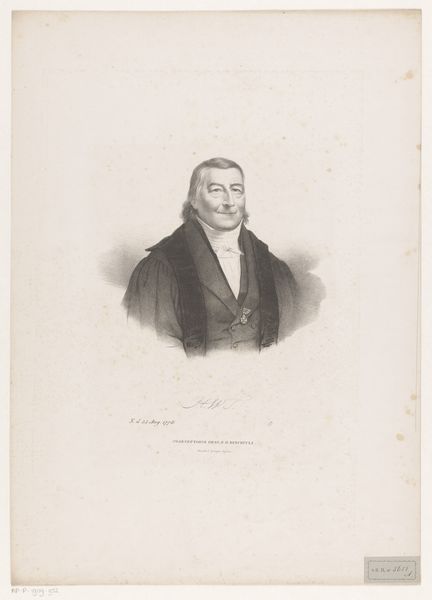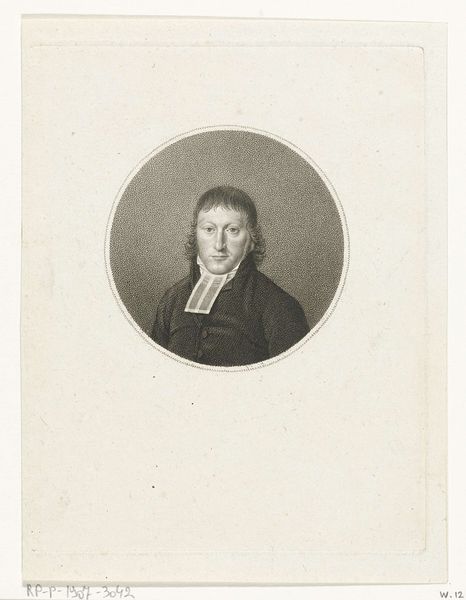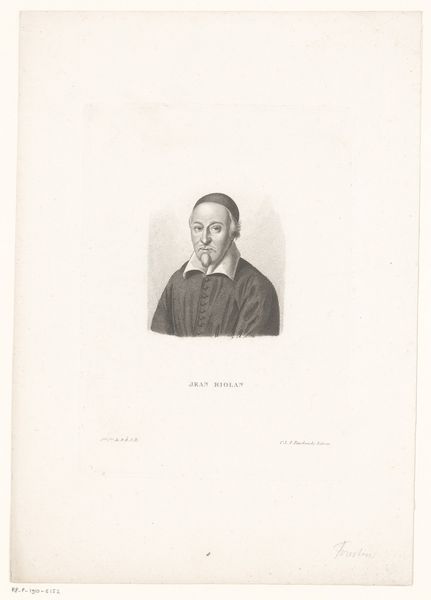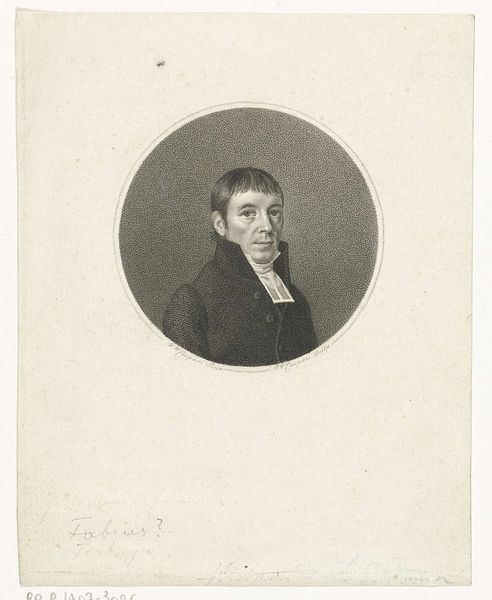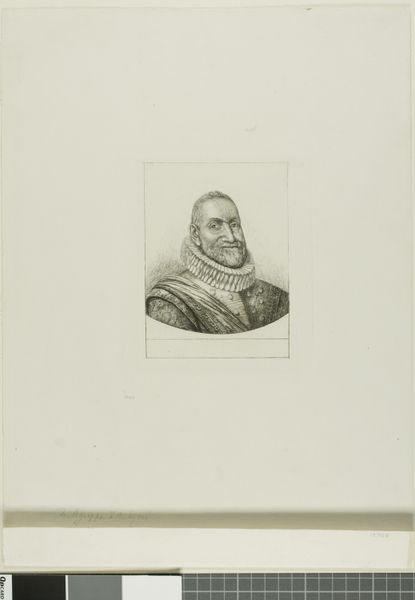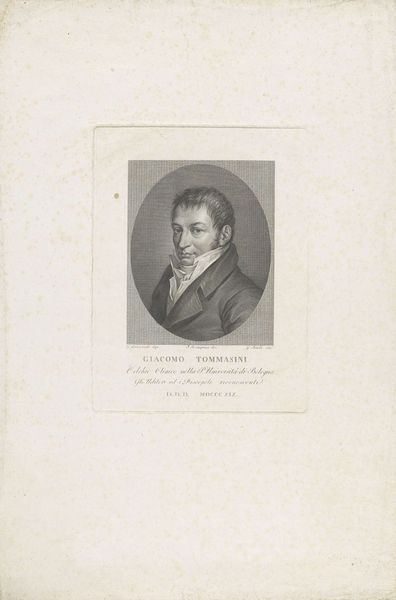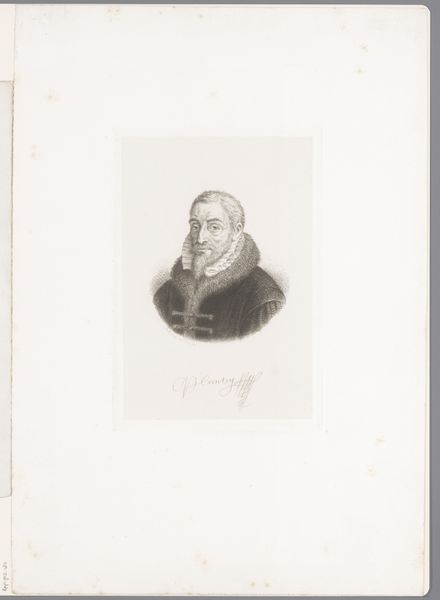
drawing, graphite
#
portrait
#
drawing
#
charcoal drawing
#
pencil drawing
#
graphite
#
portrait drawing
#
academic-art
#
graphite
#
realism
Dimensions: height 530 mm, width 415 mm
Copyright: Rijks Museum: Open Domain
Curator: Up next, we have Henricus Wilhelmus Couwenberg's "Portrait of Gerrit Moll," dating back to 1838, here at the Rijksmuseum. It's a striking piece. Editor: Yes, initially it reads a bit stern, almost stoic. The figure is centrally located, with light almost exclusively illuminating his face. It commands a certain authority, doesn’t it? Curator: It does. It’s crafted with graphite, which is key. Think about graphite, how it smudges so easily—the controlled, academic precision here is fascinating when you consider its material properties. It allows the artist to achieve the subtlety of shading across Moll's face, hinting at wisdom etched into the very fibers of his being. Editor: I am stuck with his clothes though. The collar is incredibly stiff; his velvet jacket looks uncomfortable. I see a society that dictates that comfort and labor are nowhere near refinement, though I could imagine those robes offering warmth in an unheated study. Couwenberg emphasizes a specific presentation of wealth, using graphite to its fullest potential in service of societal expectations. Curator: I love that reading. Couwenberg, so enmeshed within these same social mores, still captures an underlying… melancholy. He looks out, doesn't he, past us, carrying perhaps burdens of knowledge we can’t fathom. And how do the layers of meaning pile up, between artist and subject! Editor: Graphite itself carries an interesting social narrative—sourced from mines, processed by unseen hands. What labor fueled the creation of the tools that shaped this man's image, preserving his likeness for the ages? Was it cast in iron? Curator: Another poignant aspect is this inherent fragility. Graphite drawings, they’re susceptible. The work will outlive us all. But the picture seems fleeting as it rests beneath a museum's careful gaze. Editor: Absolutely. Thinking about graphite connects the art directly to its raw materials, to industrial process and the labor. Now I see it! Curator: And yet it can still capture something beyond that, something human, maybe the material is almost incidental. We could never be quite certain what it will become. Editor: Perhaps that’s the most poignant element of it all: graphite is, finally, as unpredictable as a feeling. It can give us a very real sense of history and what goes into the making of an individual, of society, of even ourselves.
Comments
No comments
Be the first to comment and join the conversation on the ultimate creative platform.
